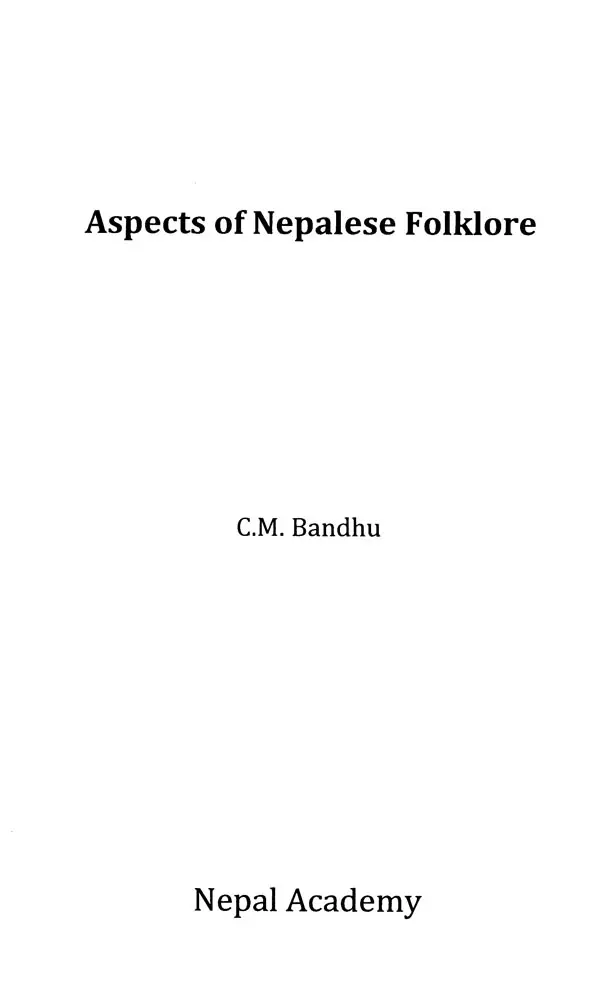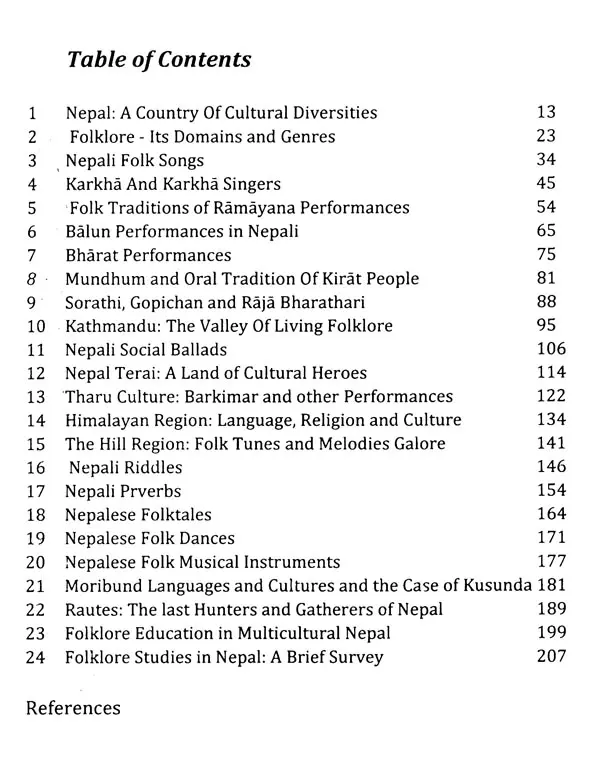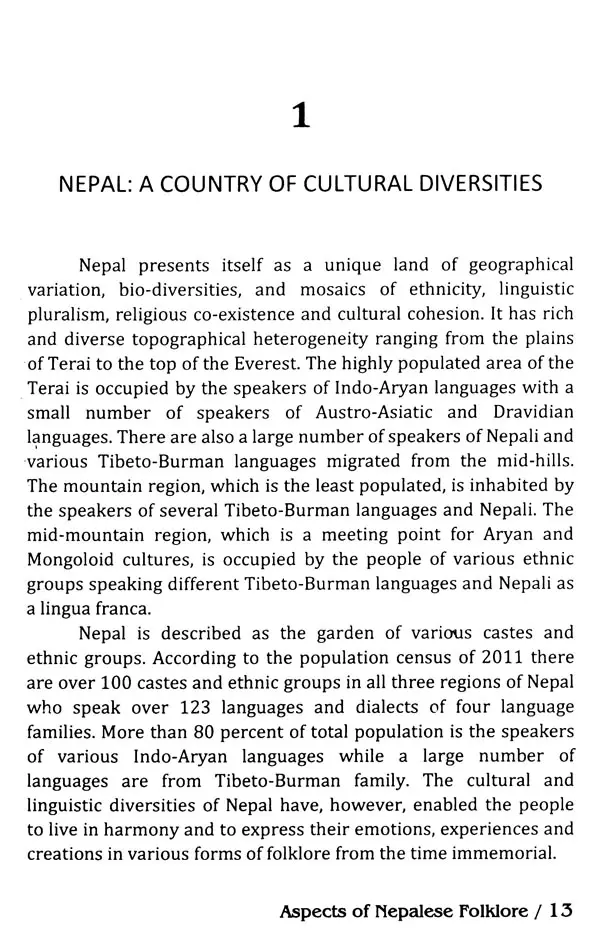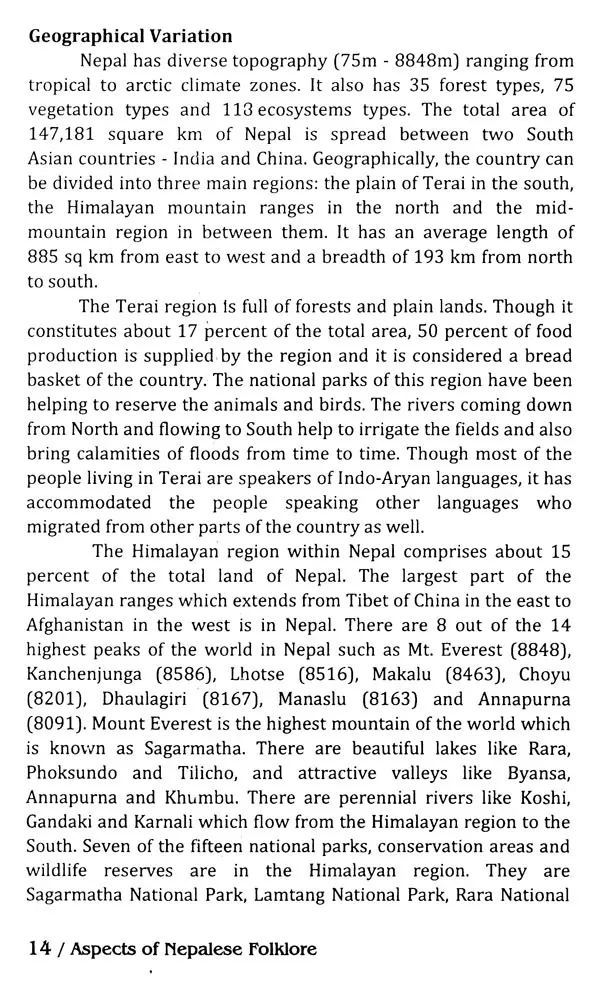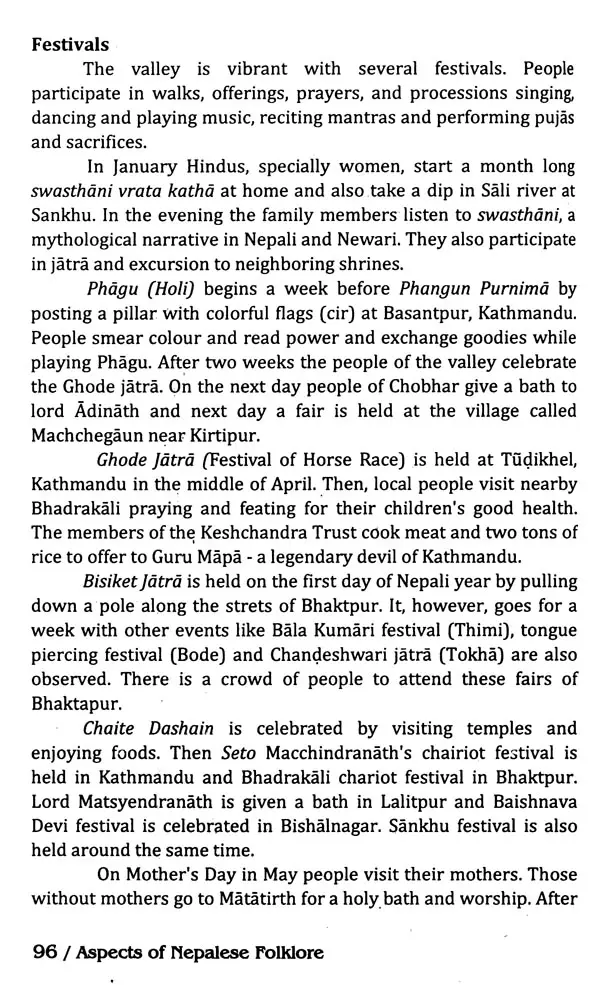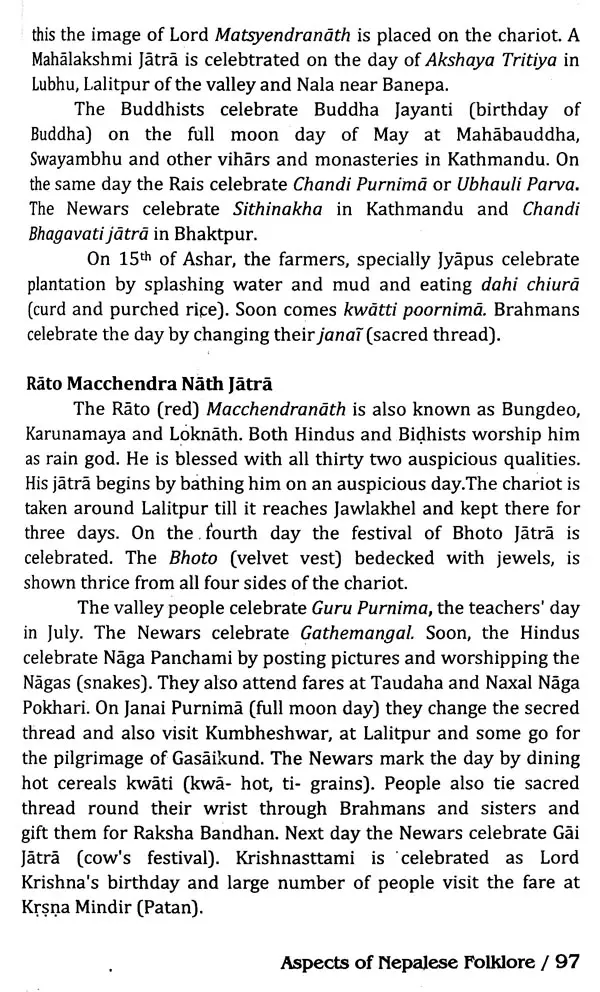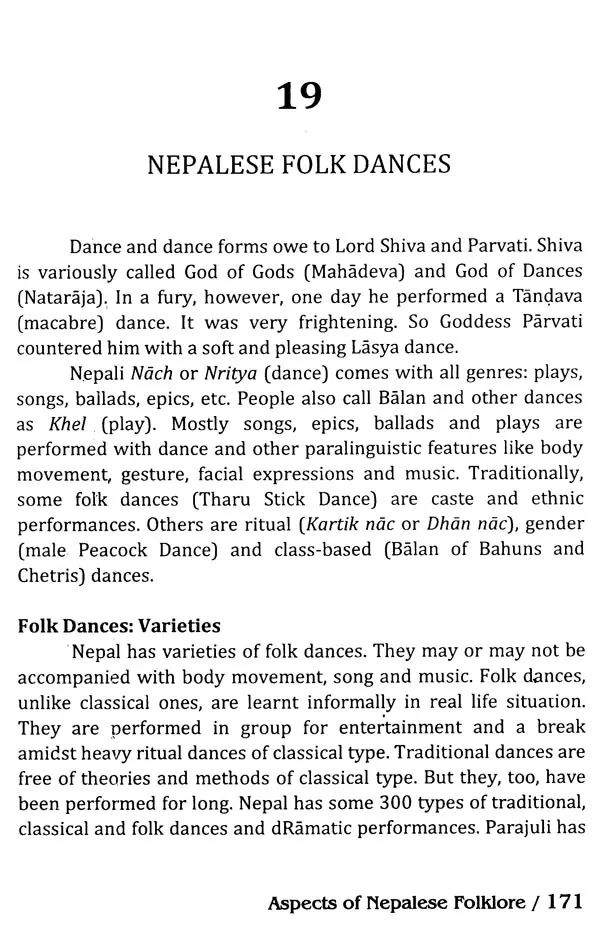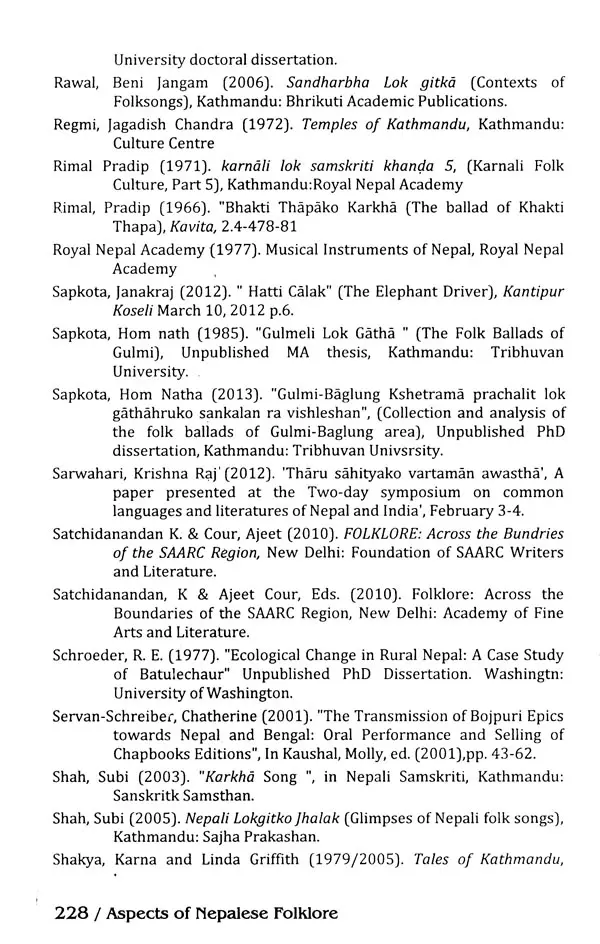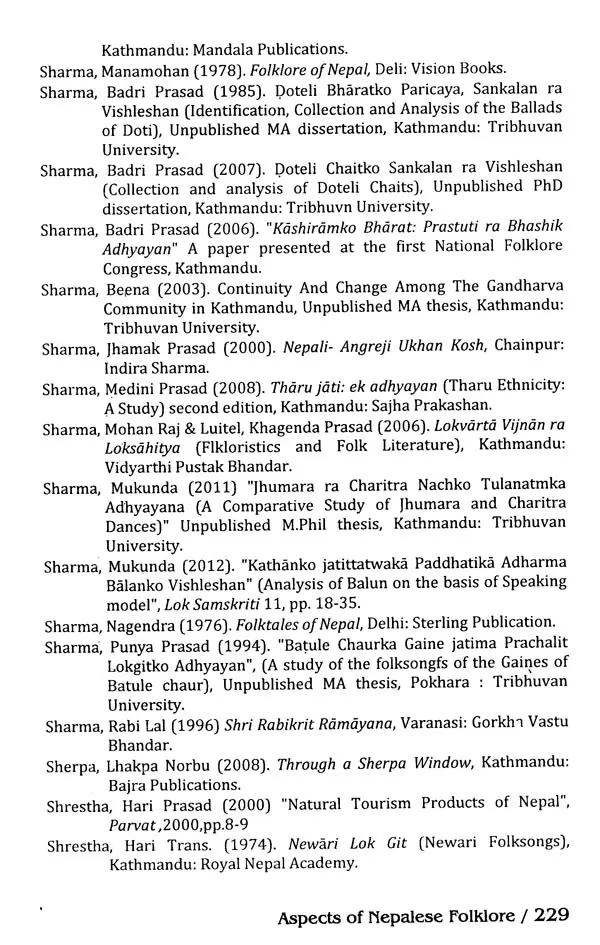
Aspects of Nepalese Folklore
Book Specification
| Item Code: | UAH032 |
| Author: | C.M. Bandhu |
| Publisher: | NEPAL Academyn, Kathmandu |
| Language: | English |
| Edition: | 2016 |
| ISBN: | 9789937689182 |
| Pages: | 232 |
| Cover: | PAPERBACK |
| Other Details | 8.50 X 5.50 inch |
| Weight | 260 gm |
Book Description
Undoubtedly, Nepal is a garden of different ethnic groups and castes. Although there are geographical, biological, ethnic, linguistic and cultural differences, Nepalese people have shown good example of mutual understanding, peaceful coexistence and brotherhood. ‘
Nepal is a treasure house of folklore displayed by the behavior of the people and preserved in their expressions and creations. For example, varieties of folk songs have been sung and transmitted orally in Nepalese languages. Only recently they have been recorded and published. I remember one of the earliest collection of Nepali folk songs by Hajir Man Rai - an anthology of folksong~ entitled "Mitha Mitha Nepali Geet" (The Sweetest Nepali Songs). Later, many of the researchers have collected folksongs. The folk style lyrics were initiated by the renowned poets -of Nepal like Laxmi Prasad Devakota and followed by other prominent poets like Madhava Ghimire, Dharma Raj Thapa and Ali Miya, who have been successful to penetrate the hearts of Nepalese people. After the arrival of democracy in 1951, the poems written in folk style have been the most powerful medium of social change. These folksongs were not only the best sources of entertainment for the people but also the most effective way of social transformation. As the perceptions of common people are shared and conveyed well the folk songs have been the most important means of inner expression and communication.
Folklore of any community comprises the oral traditions, performing arts, customs and manners, beliefs and practices, the material artifacts and the traditional knowledge. They are categorized when we study them but many of them are performed simultaneously. A performance of traditional dance in Kathmandu, Ghatu in the hills, and Salhes in Terai are based on the beliefs and practices and are performed with music and dance using their artistic musical instruments. There is substantial credence within the simplicity of folk songs holding much strength to inspire everyone's heart. They are sung countrywide vividly in their regional styles. Some of them are Jhyaure, Chudka, Khyali, Roila, Kaura, Deuda, Dhamari, Balun, Teej Geet, Deusi, Bhailo, Doha etc. The folk songs are popularly sung not only within the country but it has become worldwide due to the electronic network.
Professor C.M. Bandhu has covered a wide variety of topics in his Aspects of Nepalese Folklore from hills, mountains 'and Terai of Nepal as well as from different Nepalese folk groups. He has also discussed various forms of oral literature such as epics, ballads, folktales, proverbs and riddles. He is keenly concerned about the traditional practices which are slowly dying out and suggests that immediate steps should be taken to preserve them for posterity. He also reveals that the folklore is the most important binding force for unity in diversity.
Book's Contents and Sample Pages
